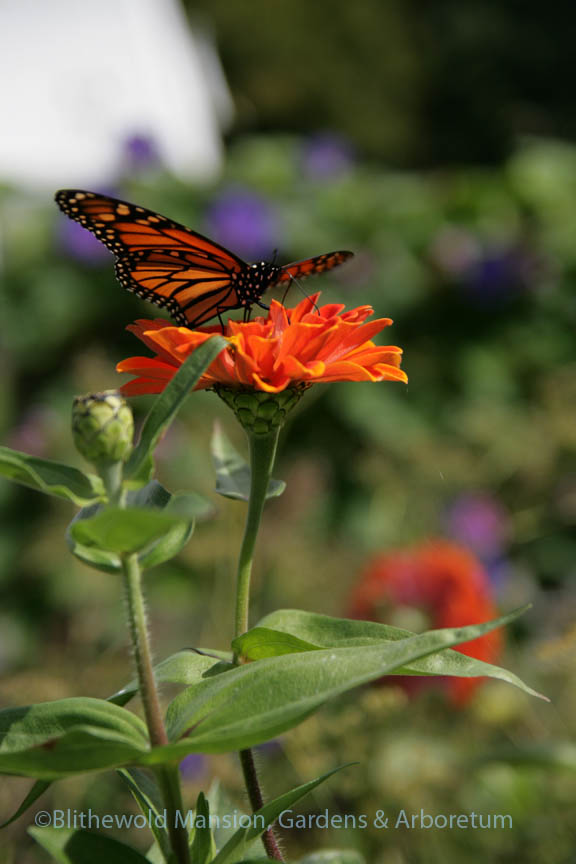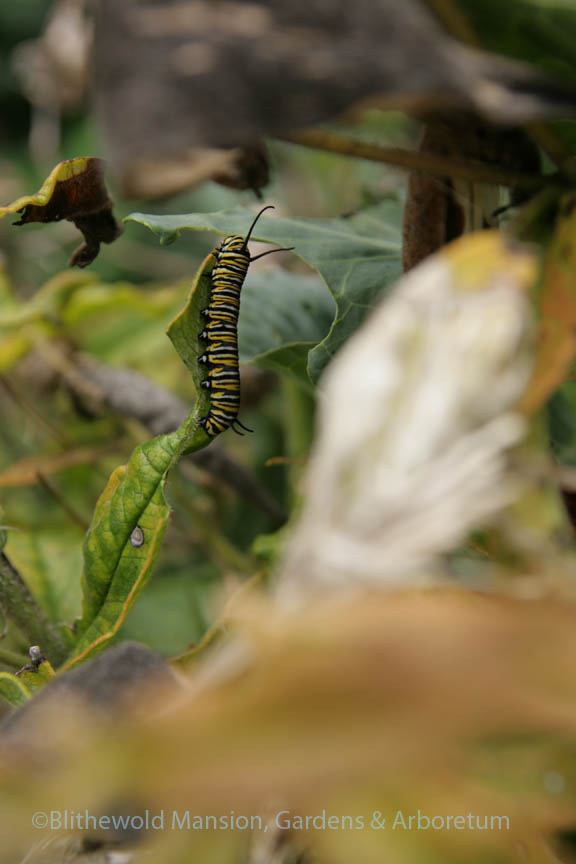Migrations
Whole days go by now between hummingbird sightings and I just stood in the Display Garden with my camera poised for a good 15 minutes waiting to catch a glimpse of a monarch. They’re few and far between now. But just this morning I read a news blurb in the local paper that thousands of monarchs en route to Mexico stopped for a rest on Goosewing beach in Little Compton (click here to see the picture). If only they had taken a slight detour westward to visit us… I’m not sure if the monarchs we’re still seeing have come down from the North or if they have just been (re)born here — there are still plenty of caterpillars on the milkweed and butterfly weed plants. But I do know (because I looked it up like I have to every year) that these butterflies are the 4th generation great-grandchildren of the butterflies that began traveling up from Mexico last spring. Unlike their parents, grandparents and greats who only live 2-6 weeks as butterflies, these guys are made of tougher stuff. They’ll live long enough (up to 8 months) to make the journey back to Mexico, hibernate for the winter and mate in spring to circle the cycle back northward again. Wish them luck.
The hummingbirds we’re still seeing (which I can never seem to get a photo of) are making their way down from the North and stopping just long enough to tank up during their long journey to Central America. From what I understand, these travelers should be females and youth because the (older) males fly on ahead. I know some people took their feeders down during those few days when it seemed like our local birds disappeared for good, but if you leave it up – or leave plenty of late blooming salvias, porterweed (Stachytarpheta spp.), honeysuckle, fuchsias, and nicotiana in the garden, you’ll get on the migrant’s list of favorite roadside diners and those birds will return year after year. (Their average lifespan is estimated to be 3-4 years, which is pretty incredible considering their tiny hearts beat up to 1200 times per minute.) And then don’t forget to put the feeder back out again in April/May.
Are you still seeing hummingbirds and monarchs in your garden?


